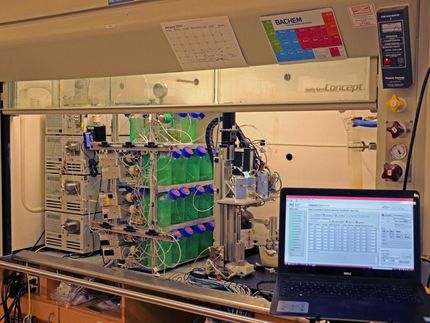Vitamin-mediated Cell Delivery of Oligonucleotides
Advertisement
Link Technologies Ltd has announced the availability of a novel vitamin modifier, which has shown in initial tests to have the potential of improving cell delivery of oligonucleotides. The new reagent, 5’-Niacin-CE Phosphoramidite, is easily incorporated during solid phase oligo synthesis. The niacin-based modifier from Link offers several advantages over the use of conventional lipophilic delivery agents, including reduced risk of in vivo toxicity, and removes the necessity of cleaving the delivery reagent once in the cell. These benefits make vitamins, including niacin, an attractive method for the delivery of therapeutic oligonucleotides, such as siRNA, into cells.
While lipophilic modifier reagents have been shown to enhance cell penetration, vitamin-mediated cell delivery offers a distinct advantage due to the fact that vitamins are required, but not produced by cells. As such, it is believed that interaction with a specific binding protein is required before the vitamin-oligo conjugate is internalised. Not only does this enhance delivery and overcome the risk of toxicity, as the vitamin-based reagents are recognised by the cell, but it also offers some exciting potential for cell targeting.
Derived from niacin, an essential vitamin heavily involved in the biosynthesis of NAD and NADH, Link’s new vitamin modifier, 5’-Niacin-CE Phosphoramidite, is significantly less hydrophobic and less bulky than existing delivery agents. Whereas large lipophilic modifiers can supress an oligo’s function in vivo and therefore require cleaving, which is difficult to control, it is expected that with vitamin-based modifiers, intracellular cleavage of modifiers is not necessary. Potentially, this will lead to a reduction in required dosage of the therapeutic oligonucleotide, importantly minimising the risk of drug toxicity and side effects to the patient.






















































